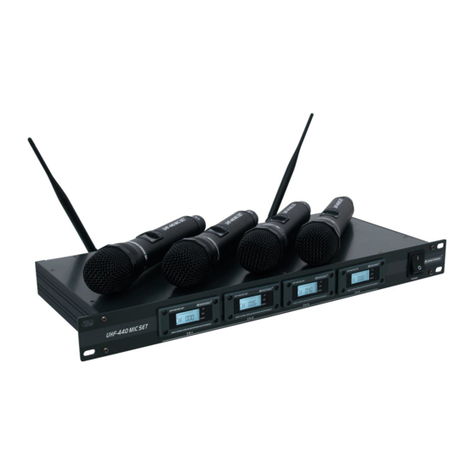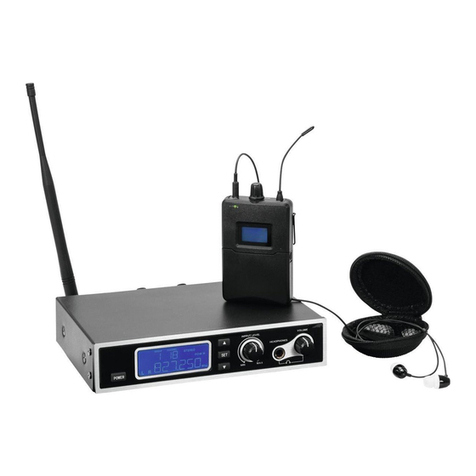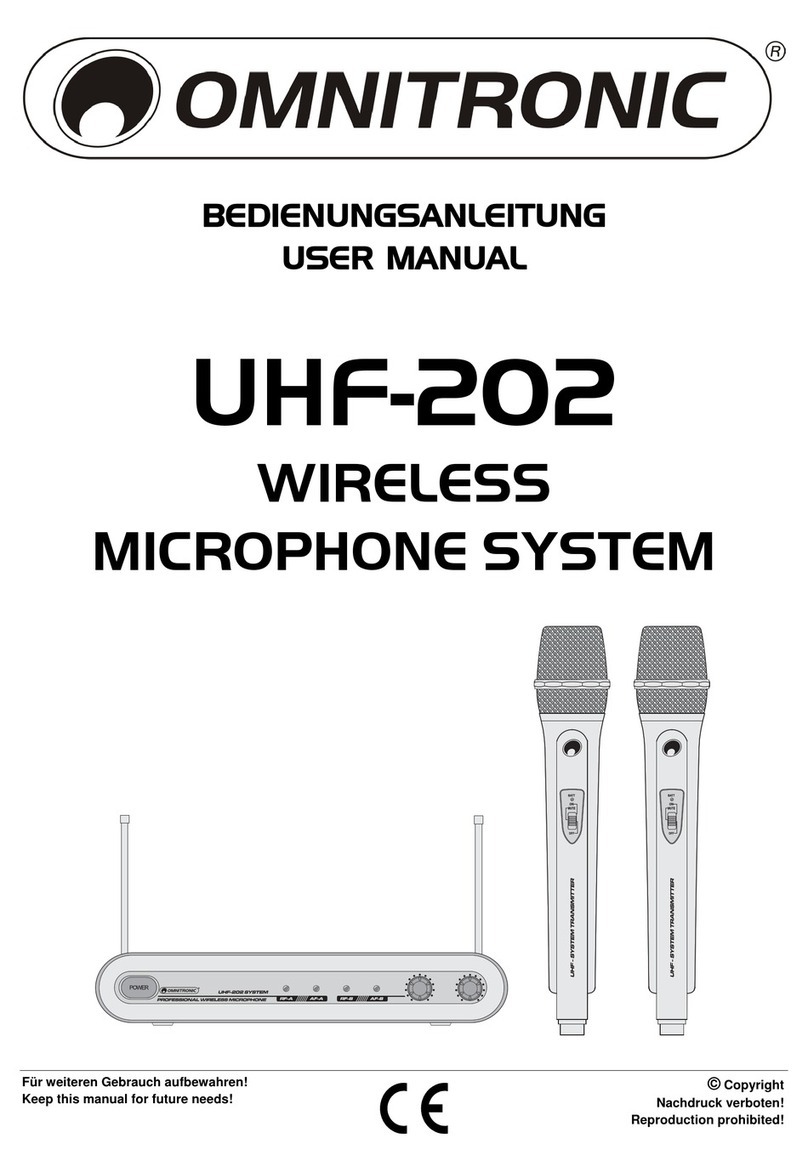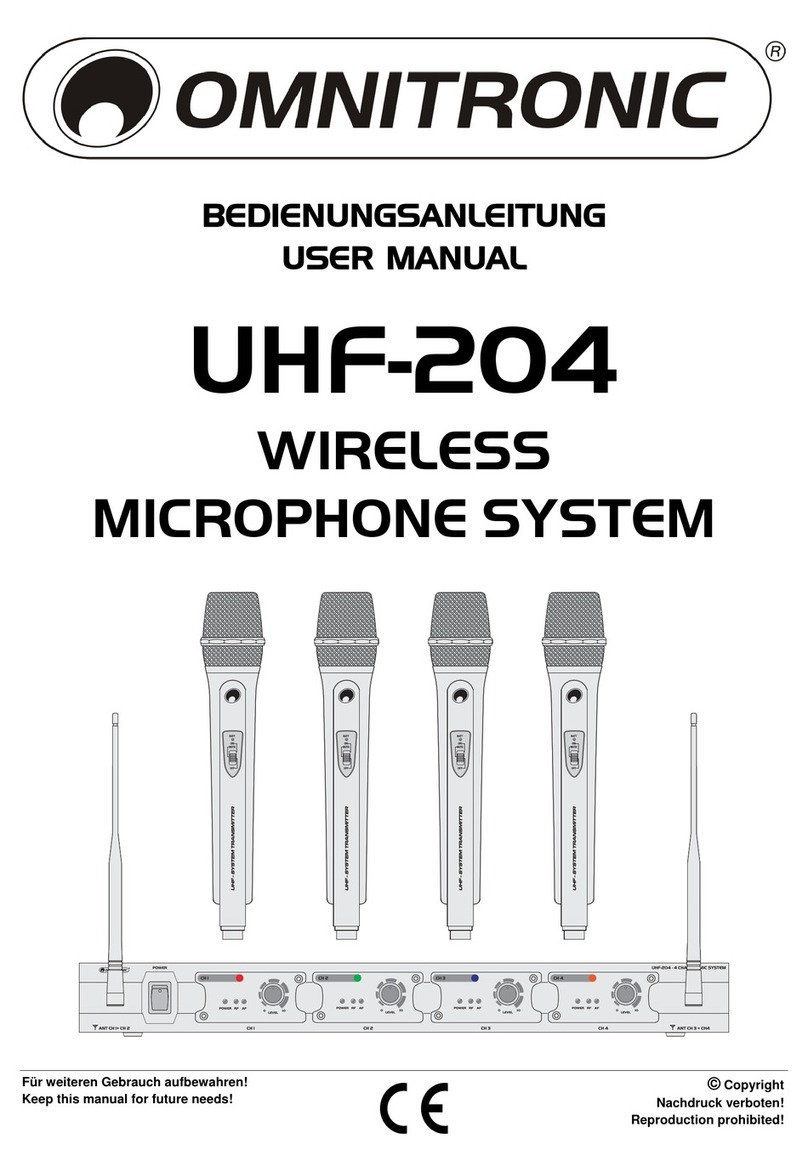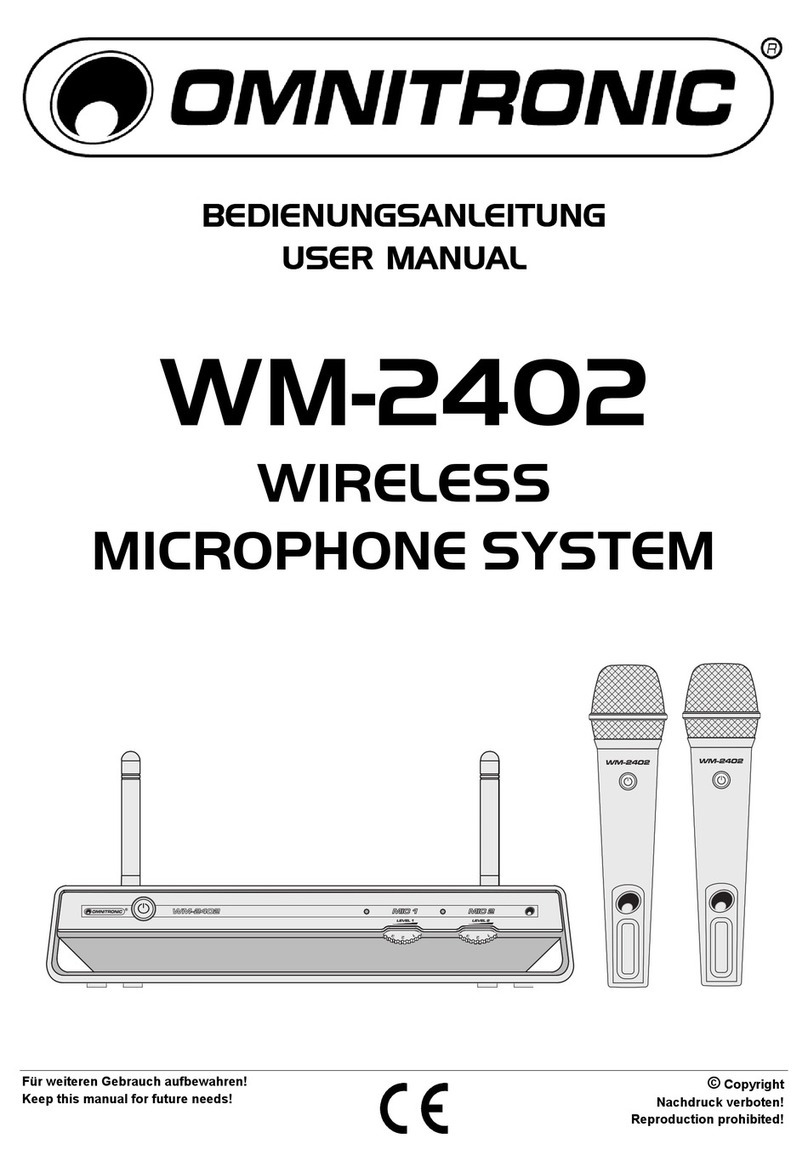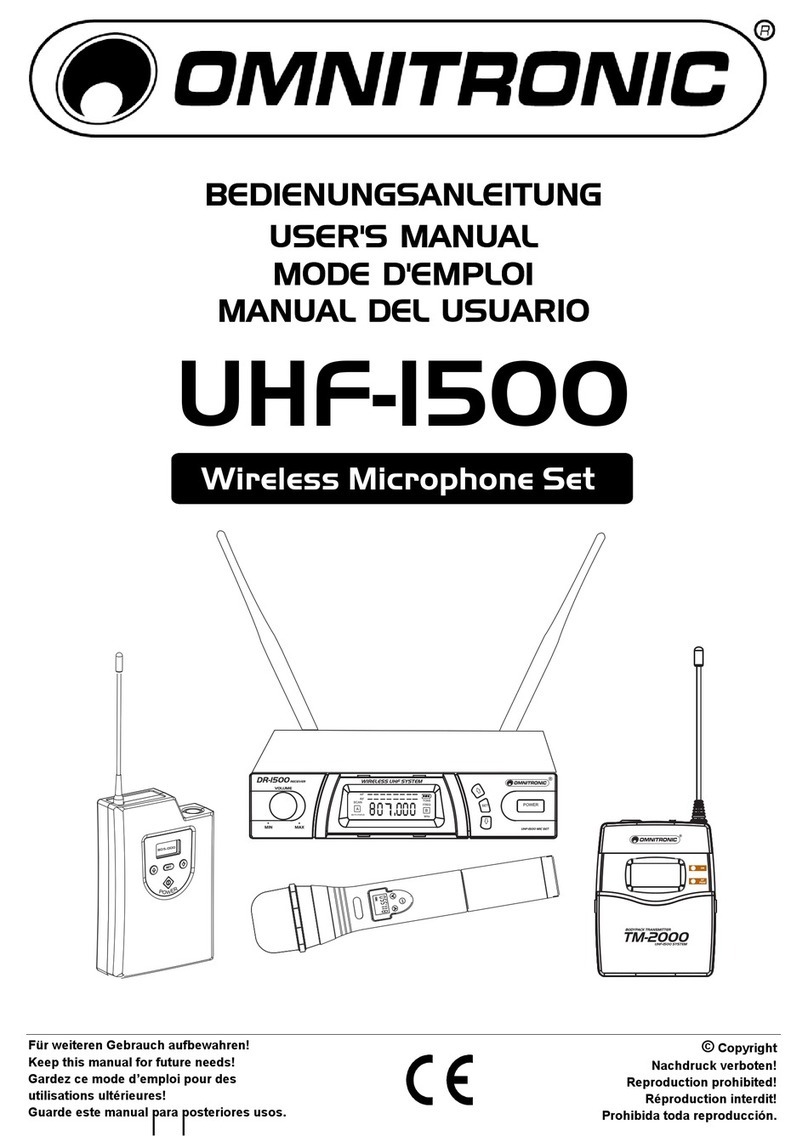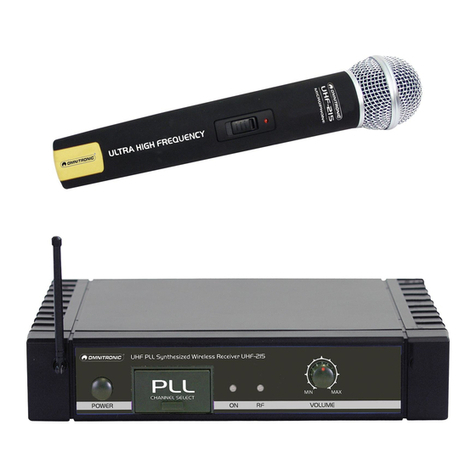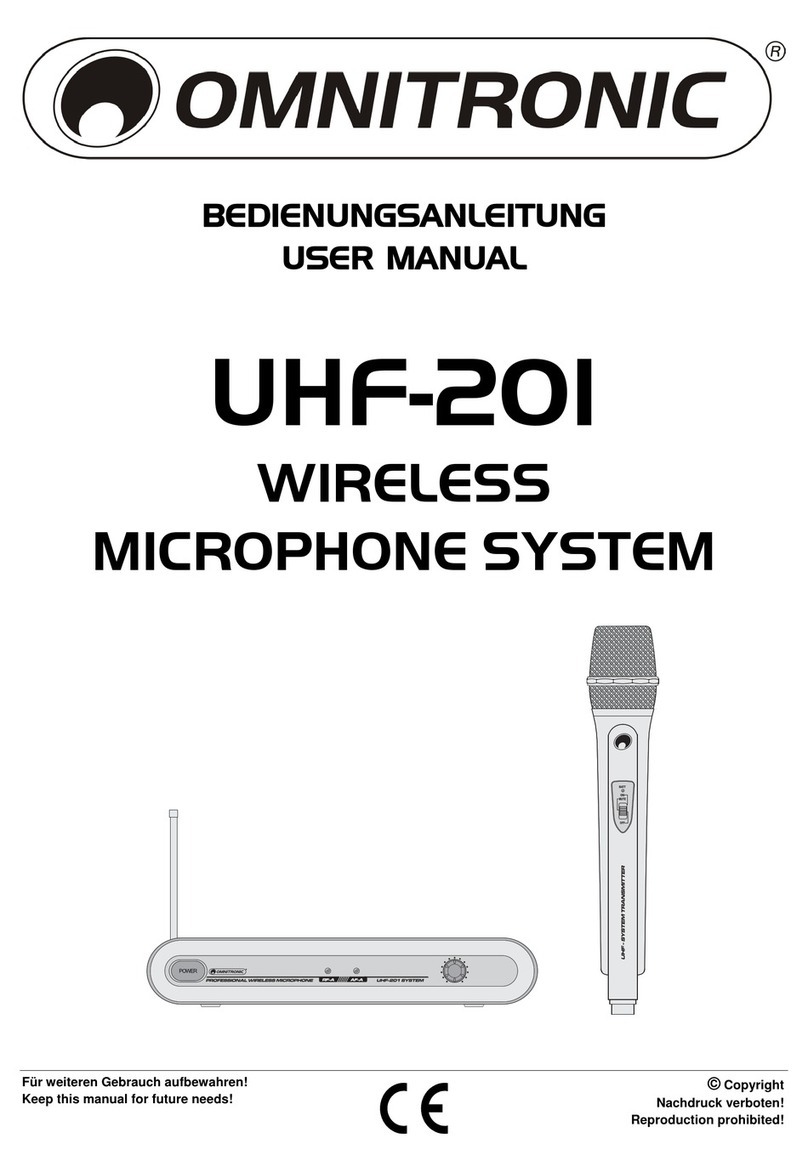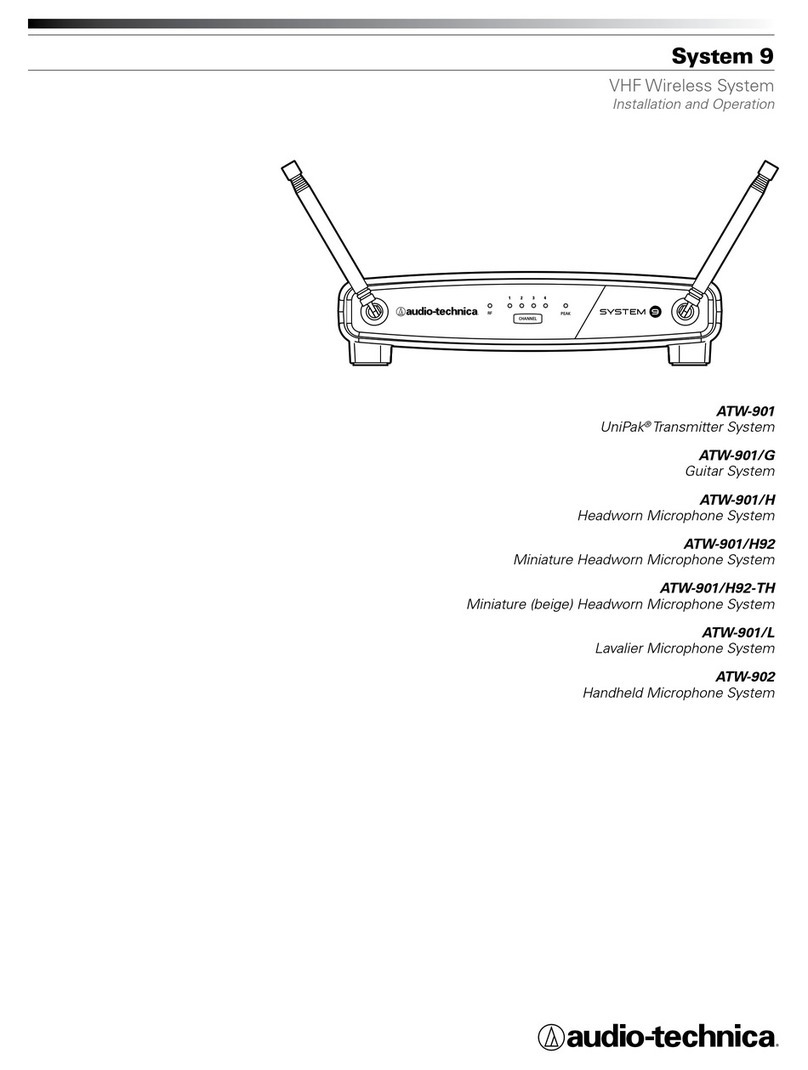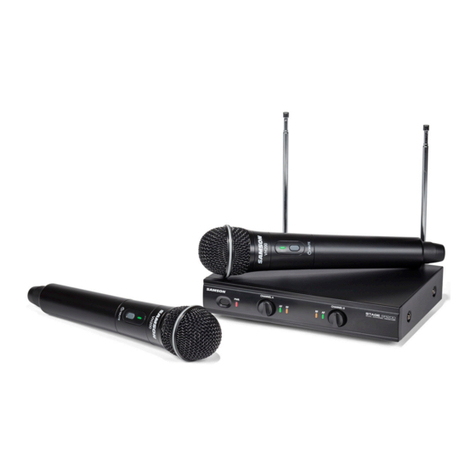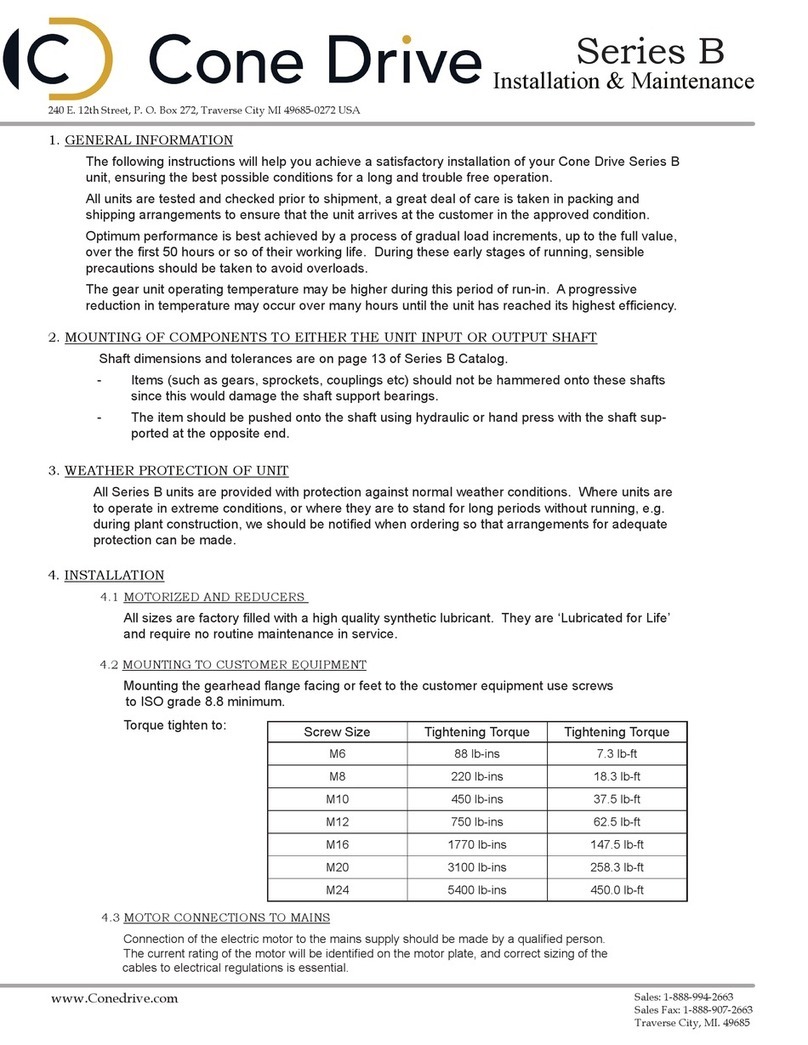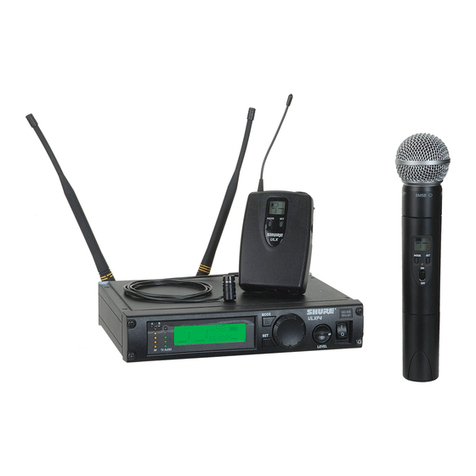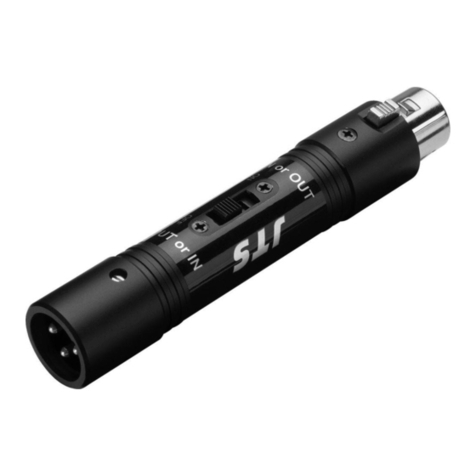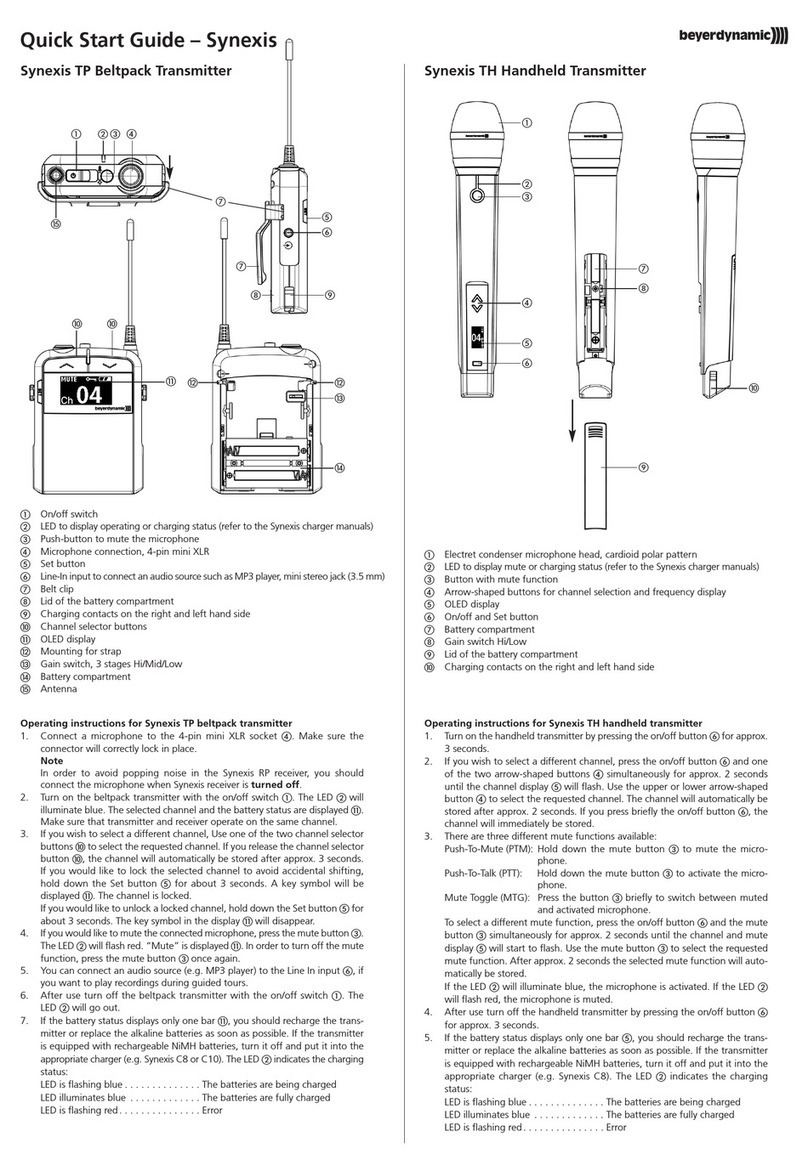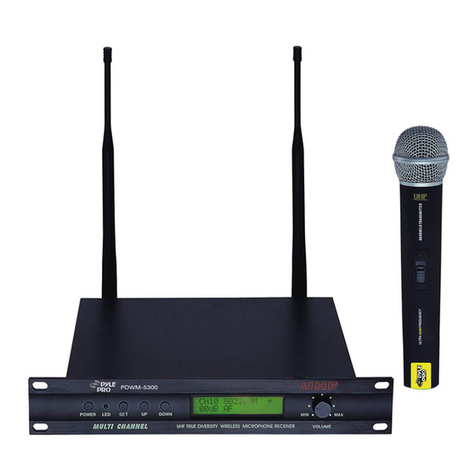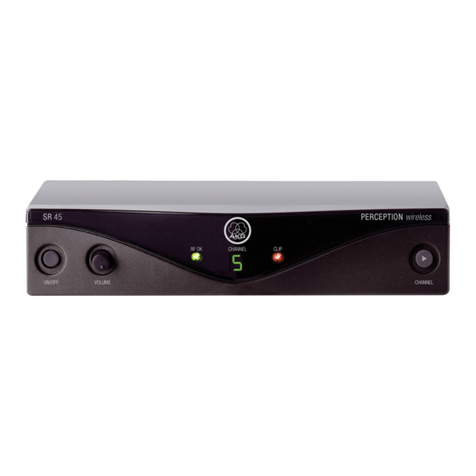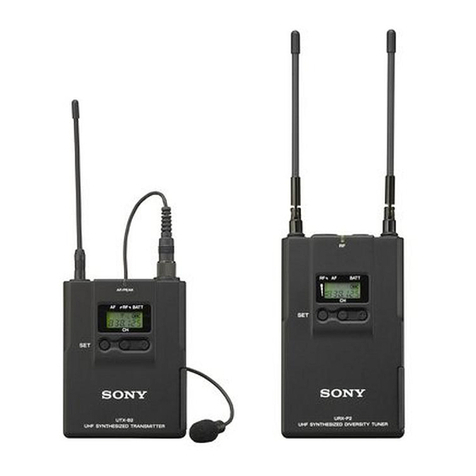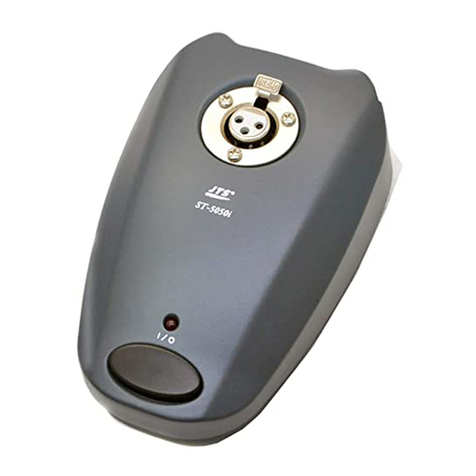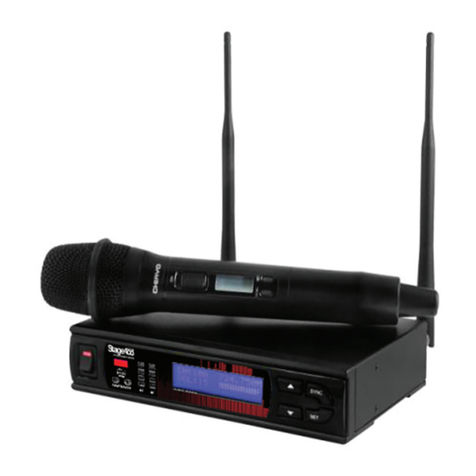13053510_V_1_0.DOC
15/26
With the ON/OFF-switch, you can switch the device on and off. When switching the device on, the red LED
shortly lights up. In this case, the power supply is sufficient.
When the batteries are getting weaker, the red LED is permanently illuminated. In this case, the batteries
have to be replaced.
If the red LED does not light up when switching on, there are either no batteries inserted or the poles are
wrong.
If the microphone is not used, switch it off via the slide switch. If the device will not be used for a longer
period of time, remove the batteries in order to avoid battery leakage.
In order to have a long battery life, you should only use alcaline batteries.
5. OPERATION
With the ON/OFF-switch, you can switch the device on and off. When switching the device on, the red LED is
illuminated.
If microphone signals are being received, the RF-LED is illuminated.
For optimum receiving please follow these instructions:
•Maintain a line-of-sight between the transmitter and receiver antennas, if possible. Avoid placing
transmitter and receiver where metal or other dense materials may be present.
•Avoid placing the receiver near computers or other RF generating equipment.
•The Squelch-control is factory preset at the 12 o’clock position for optimum performance. No further
adjustment is normally required. However, it is possible to adjust the squelch control to emphasize either
signal quality or system range.
To raise the squelch threshold, rotate the control clockwise. This causes the receiver to demand a higher
quality signal (less noise before muting), but it reduces the operating range.
To lower the squelch threshold, rotate the control counterclockwise. This allows a lower quality signal
through (more noise before muting), but it extend s the operating range.
Adjust the signal output level via the Volume-control.
If the receiver is no longer used, please turn the Volume-control to 0 and switch the device off.
IMPORTANT: Every wireless microphone installation is a unique situation, and can present a variety of
problems. Never attempt a live performance without first conducting a test of the system in the performing
area. If major changes (additional wireless systems or intercoms, relocation of scenery, etc.) have been
made since the last test, check the wireless system again - as close to performance time as possible.
6. PROBLEM CART
PROBLEM: REMEDY:
No power. Check the connection cable of the power unit and any extension-cables.
No sound; receiver RF-
LED does not flash.
Make sure POWER switches on transmitter and receiver are on.
Check transmitter Power-LED to ensure that battery is providing power.
Replace battery if necessary.
Check receiver squelch setting.
Make sure that the receiver is in the line of sight of the transmitter. If
necessary, reduce the distance between transmitter and receiver.
No receiver sound;
receiver RF-LED flashes.
Turn up the receiver audio output LEVEL control.
Check for proper connection between receiver and microphone mixer.
Talk into the microphone and observe the receiver RF-LED. If it flashes, the
problem is elsewhere in the sound system.
Received signal is noisy
or contains extraneous
sounds with transmitter
on.
Check transmitter Power-LED to ensure that battery is providing power.
Remove local sources of RF interference, such as lighting equipment .
Two transmitters may be operating on the same frequency. Locate and turn
one off.








